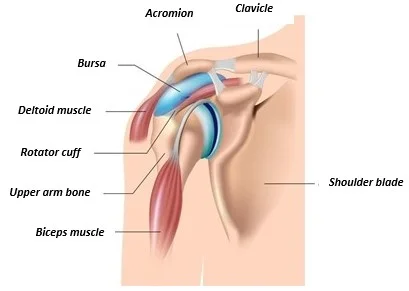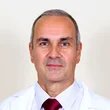This is how our application simplifies the booking and administration process. Interested >>
Shoulder (subacromial) decompression
The subacromial space is the area between the tip of the shoulder (acromion), and the upper arm that is beneath it. Its significance is that certain muscles, which contribute to arm movements, and the bursa (fluid filled sac), which is responsible for the sliding of muscles, are located here. The integrity of the subacromial space and the anatomical structures inside of it are essential to move the upper arm, and mostly, to lift it above the head from the side. Surgery may become necessary if the desired improvement is not achieved by non surgical treatments.

General information about the disease
Multiple factors may play a role in the root causes of the patient’s symptoms all of which create a narrowing in the subacromial space. Such factors may be the congenital morphology and the bone spurs of the lower surface of the tip of the shoulder (acromion), and the acquired bone spurs on the upper arm bone on the opposite side. An additional factor is the weakening, or paralysis of the shoulder girdle muscles, which results in the upper arm bone sliding upward in the direction of the tip of the shoulder due to the forces affecting it, and this compromises the subacromial space. The inflammation of the bursa may cause the same thing, which results in its thickening.
As a result of all this, the impinging soft tissues (muscles, tendons, bursa) get irritated, inflamed, and injured. These soft tissues swell up due to the inflammation, thus they cause additional relative narrowing in the space. Performing certain physical activities (work or sport) for a long period of time may also contribute to the development of the pathology. Rarely, other inflammations which are present in the body such as dental, laryngeal, urological, gynecological inflammatory foci cause inflammation in this space. Therefore, it may be important to rule them out before surgery.
Which are the potential symptoms?
As a consequence of irritation, inflammation, and injury, the most common symptoms are the following:
- Pain on loading, and often pain at rest and at night
- Painful arc
- Feeling of weakness during lifting or rotation
- Reduced range of motion
- Cracking sounds during movement
What are the treatment options?
Basically, there are two types of treatment options available. Non surgical (conservative) and surgical.
The aim of conservative treatment
The main goals of the treatments are to achieve a painless condition and restore the upper arm’s range of motion.
Conservative treatment methods
Pharmacological treatment, which consists of using painkillers, anti inflammatory drugs, physiotherapy, and other methods of physical therapy.
Surgical treatment
The point of the surgical intervention is to provide the adequate width of the subacromial space. In order to achieve this, the lower surface of the tip of the shoulder (acromion) and its bone spurs, along with the bone spurs of the upper arm bone, if necessary, are removed. The inflamed bursa is removed. The ligament, which partially creates the upper wall of the subacromial space (coracoacromial ligament) is cut through, if necessary. Following the intervention, sufficient space will be available for the upper arm muscles to move freely, preventing them from further damage.
The surgical process
- During open surgery, a skin incision of 3 5 cm long is made in the upper third of the upper arm.
- While minding its integrity, the deltoid muscle is separated along the direction of the fibers, so that the area underneath it could be accessed (deltoid split).
- During an arthroscopic surgery, a small skin incision is made on the shoulder, and the structures of the shoulder are reviewed. Then a second or if necessary, a third skin incision is made, through which the subacromial space is accessed by special instruments.
- Both during open, and arthroscopic surgery, when reaching into the subacromial space, the inflamed bursa (fluid filled sac) is removed.
- The tight, degenerated ligament (coracoacromial ligament), which creates one part of the space’s upper wall, is cut through, then the lower surface of the tip of the shoulder (acromion) is evened out. Bone spurs of the upper arm bone are removed too, if necessary.
- The integrity of the muscle which is located in this area is reviewed (supraspinatus muscle) during surgery, and if necessary, its continuity is restored with stitches.
- The area is rinsed, so that the inflammatory fluids and debris are removed.
- A small drain is inserted into the wound, if necessary, which will remove the blood and plasma that will accumulate after the surgery.
- The wound is sewed (closed) in multiple layers, and it is covered with sterile dressing.
- Your arm will be secured to your body with net bandage at the end of the surgery.
What happens if the justified surgical treatment is not performed?
- The narrowing of the subacromial space may aggravate further (progressive).
- The pain may persist or increase.
- Damage may be done to the muscles of the shoulder girdle as a consequence of the inflammation and the constant mechanical stimuli; the tendon may even tear, which may result in further surgical interventions.
- The movements of the upper arm may be limited.
- The quality of life may deteriorate.
- A surgery performed later may be technically more difficult, and its effectiveness may decrease.
If you have any questions, please send a letter to magankorhaz@bhc.hu!



